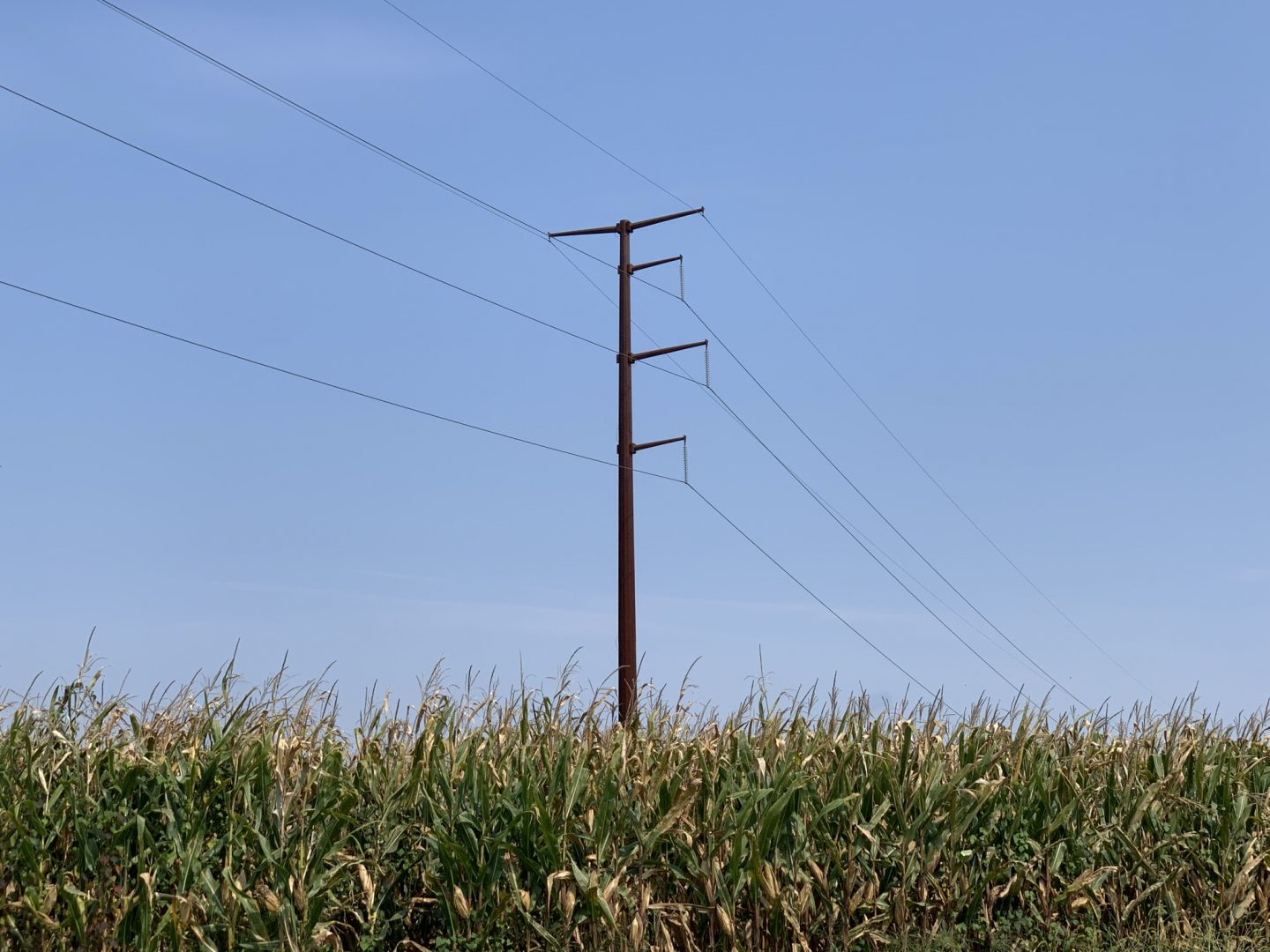
A transmission line stands in a cornfield in Chanceford Township, York County on Sept. 13, 2021.
Rachel McDevitt / StateImpact Pennsylvania


A transmission line stands in a cornfield in Chanceford Township, York County on Sept. 13, 2021.
Rachel McDevitt / StateImpact Pennsylvania

Rachel McDevitt / StateImpact Pennsylvania
A transmission line stands in a cornfield in Chanceford Township, York County on Sept. 13, 2021.
A new report from renewable energy boosters says increased coordination between regional electric grids could save people billions of dollars on energy bills.
“The grid” is actually made up of many regional electric grids that can’t trade power between them very easily. When they do share, it can drive up costs.
The report from Grid Strategies and the American Council for Renewable Energy, looks at the benefits of connecting the PJM grid, which includes Pennsylvania, and MISO, which covers a large part of the midwest.
Building new transmission is expensive up front, but the analysis says more interregional power lines will lower the overall number of power plants needed and let cheaper power flow more easily across borders, saving people in the region $1 billion each year.
Michael Goggin, Vice President of Grid Strategies, said more transmission will also make the grid more reliable.
“Because you can kind of share the resources; when you have your time of need, you’re able to borrow power from your neighbor that doesn’t have as severe of a need and vice versa,” Goggin said.
The U.S. Department of Energy this week released a National Transmission Needs Study that found the MISO-PJM region has the largest need for interregional transmission in the country.
Jeff Dennis, Deputy Director for Transmission at the Grid Deployment Office within DOE, says, with high renewable growth and moderate demand growth, the agency expects the MISO-PJM region will need to increase its capacity to share power 156% by 2035.
“To move low-cost and low-carbon generation that’s available in the Plains and the Midwest regions to the Mid-Atlantic, where it’s needed to resolve those high energy prices, meet state policy goals,” Dennis said.
The Grid Strategies report recommends regional operators work together to proactively plan for long term power needs and prioritize new generation and transmission projects that will deliver the most efficiently.
To reach Biden Administration renewable energy goals, a 2020 Princeton University study found the country would need to more than double its power infrastructure in the next decade.
Only 70 miles of transmission lines between regions were built annually, on average, from 2011 to 2020, according to the DOE.
StateImpact Pennsylvania is a collaboration among WITF, WHYY, and the Allegheny Front. Reporters Reid Frazier, Rachel McDevitt and Susan Phillips cover the commonwealth’s energy economy. Read their reports on this site, and hear them on public radio stations across Pennsylvania.
(listed by story count)
StateImpact Pennsylvania is a collaboration among WITF, WHYY, and the Allegheny Front. Reporters Reid Frazier, Rachel McDevitt and Susan Phillips cover the commonwealth’s energy economy. Read their reports on this site, and hear them on public radio stations across Pennsylvania.
Climate Solutions, a collaboration of news organizations, educational institutions and a theater company, uses engagement, education and storytelling to help central Pennsylvanians toward climate change literacy, resilience and adaptation. Our work will amplify how people are finding solutions to the challenges presented by a warming world.